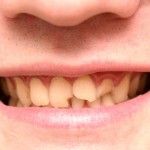
Traumatic dental injuries (TDIs) have been estimated to effect around 1 billion people worldwide. They are more common in children under the age of 12 and in the UK about one in five children may have suffered from dental trauma to their permanent teeth. TDIs have been reported to be more common in individuals with an increased overjet.
The aim of this review was to identify the different overjet sizes that present an increased risk for developing dental trauma across different ages and dentition stages.
Methods
Searches were conducted in the Medline, Embase, Scopus, Dentistry & Oral Sciences Source (DOSS), OpenGrey Repository and TRIP databases. Studies published in Arabic, English, French, Greek, Italian, Portuguese, Spanish, and Turkish were considered. Two trained and calibrated reviewers independently screened and selected studies and assessed study quality using Joanna Briggs Institute (JBI) tools . Prospective and retrospective cohort (longitudinal) studies, case‐control studies, and analytical cross‐sectional studies involving patients in any dental dentition stage were considered. The overjet and the outcome measured (TDI) must have been measured in a standard, valid, and reliable manner for all participants. Where possible, meta-analyses were performed using the random-effects model, supplemented with the fixed-effects model in situations where statistical heterogeneity was ≤50%, assessed using the I2 statistic.
Results
- 41 studies involving a total of 66,366 patients were included.
- 27 were published in the past 10 years, 9 between 10-15 yrs ago and 5 more than 15 years ago.
- All the studies were cross-sectional in design.
- The studies were undertaken in Africa (3), the Americas (18), Asia (12), and Europe (8)
- 9 studies were of primary teeth only.
- A summary of the overall meta-analysis in each age group as summarised in the table.
| Children’s Age | Overjet | No. of Patients | Odds Ratio (95%CI) |
| 0‐6 years | ≤3 – overjet >3 mm | 2,374 | 2.52 (1.77 – 3.60) |
| 7‐15 years | ≤3 mm vs >3 mm | 7,076 | 2.05 (1.63‐2.60) |
| 8‐14 years | ≤5 mm vs >5 mm | 8,628 | 2.43 (1.34‐4.42) |
| 11‐14 years | >3.5 mm | 2,709 | 1.87 (0.88‐4.00) |
| 11‐15 years | ≥5 mm | 3,285 | 1.89 (1.45‐2.47) |
| 12 years | >3 mm | 1,604 | 5.19 (3.92‐6.89) |
| 12 years | >5 mm | 11,364 | 1.81(1.44‐2.27) |
| 12‐16 years | >6 mm | 2,405 | 2.72 (1.13‐6.58) |
Conclusions
The authors concluded:
There is a significant association between increased overjet and TDIs. The OR varies according to age range, dentition stages, and differing overjet thresholds. A child in the primary dentition could be considered as having an overjet at risk for trauma when it is greater than, or equal to 3 mm. In the early secondary dentition, the threshold is an overjet greater than, or equal to 5 mm.
Comments
A previous systematic review by Petti (Dental Elf -27th Jan 2015) has considered this question. That review had included 56 studies compared with the 41 in the current review. This is probably due to variations in the inclusion criteria and the decision to exclude studies with higher risk of bias in this review. The pooled odds ratios for both reviews are similar with both demonstrating an increased risk of TDIs with increasing overjet. The earlier review focuses on the overall risk by dentition (primary or permanent) while this new review has taken an age focused approach. The authors highlight that because of differences in recording different presentations of TDIs during data collection. The potential of interceptive orthodontic treatment and mouthguard use to reduce TDIs is also mentioned as is the use of common threshold to discuss TDI risk with patients.
Links
Primary Paper
Arraj GP, Rossi-Fedele G, Doğramacı EJ. The association of overjet size and traumatic dental injuries-A systematic review and meta-analysis. Dent Traumatol. 2019 May 6. doi: 10.1111/edt.12481. [Epub ahead of print] Review. PubMed PMID: 31062510.
Arraj GP, Rossi-Fedele G, Doğramacı EJ. The association of overjet with traumatic dental injuries: a systematic review protocol. JBI Database System Rev Implement Rep. 2018 Jul;16(7):1511-1518. doi: 10.11124/JBISRIR-2017-003599.PubMed PMID: 29995712.
Other references
Dental Elf – 27th Jan 2015
Dental Elf – 15th May 2018
